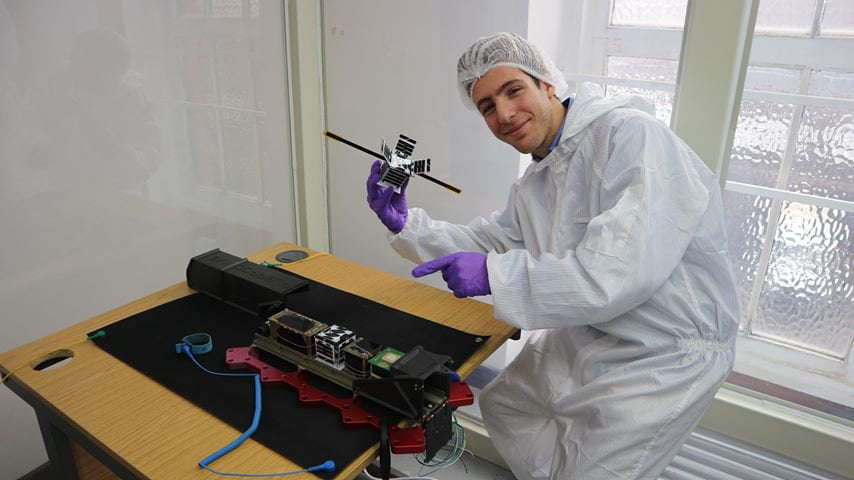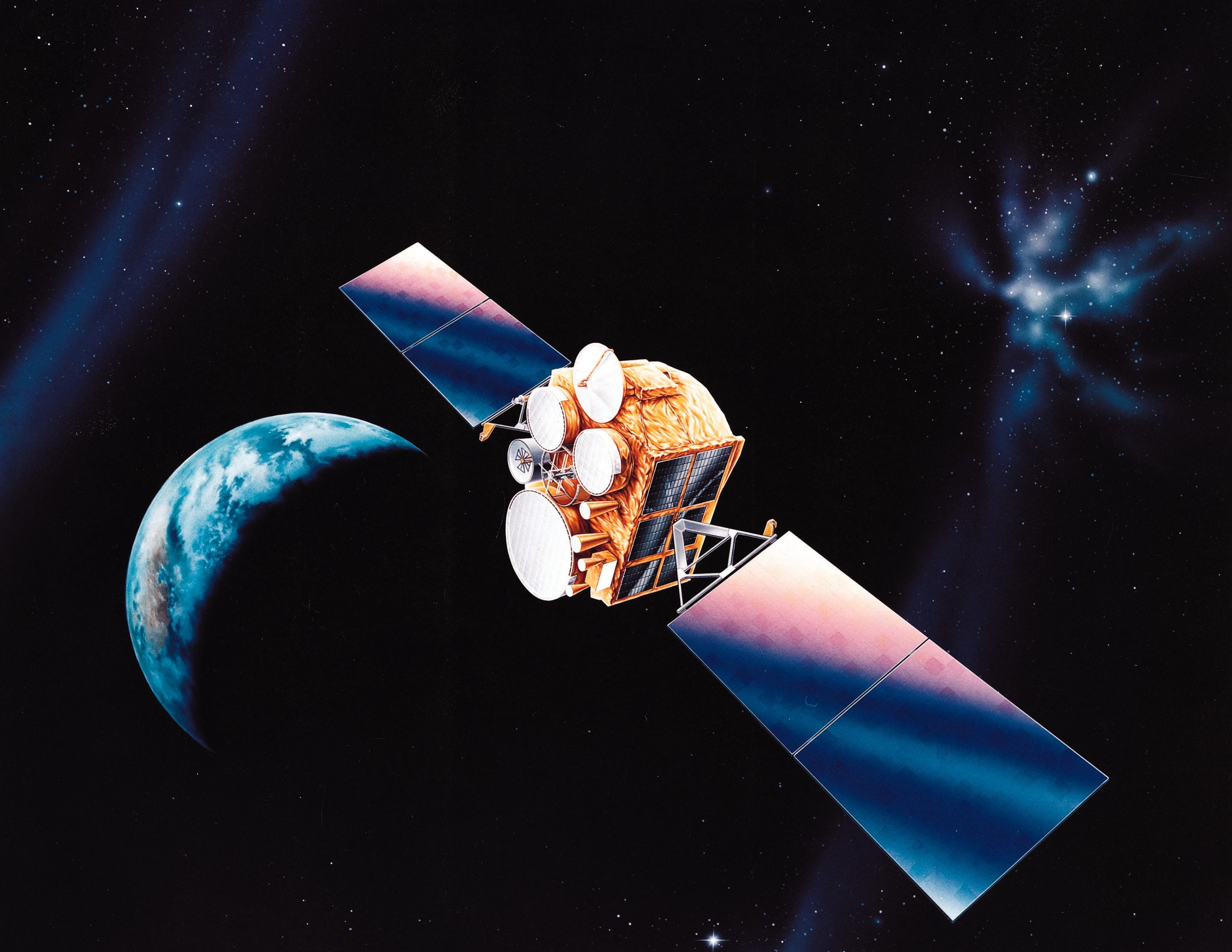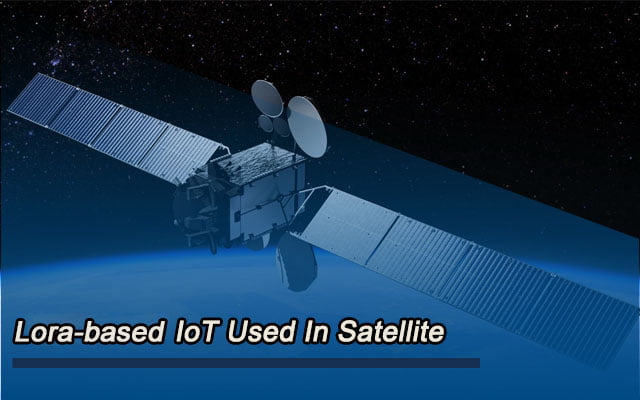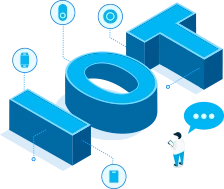LoRaWAN IoT is the latest development in LPWAN (Low-power, Wide-area Network) technologies. It is specifically designed for connecting battery-operated devices to the internet is global, regional, or national networks. This allows us to target the main IoT (internet of things) requirements such as end-to-end security, bi-directional communication, localization, and mobility services.
LoRaWAN network architecture is modeled on the star-of-stars topology. In this topology, gateways relay messages between a central network server and end-devices. Therefore, the gateways use standard IP connections to communicate with the network server. Hence, they act as a transparent bridge for the conversion of IP packets to RF packets and vice versa.
LoRaWAN technology allows communication over a long-range by using the capabilities of the LoRa physical layer. So, it allows for a single-hop link between the gateways and the end-devices. Therefore, all modes are capable of bi-directional communication. Therefore, it gives us support for multicast addressing groups for efficient use of the spectrum during various tasks. These tasks include mass distribution messages and FOTA (Firmware Over-The-Air) upgrades.
Need for IoT in Satellite
The growth momentum of IoT can play a vital role in Satellite technology. Here are some reasons which advocate the need for IoT in Satellite,
-
Transforming satellite connectivity through LoRaWAN IoT
Satellite technology serves as a major tool for development across various industries and can transform the IoT connectivity as we understand it today. So the satellite operators can deliver strategic advantages over various domains for all customer segments by harnessing the potential of IoT.
-
Connectivity for remote assets
Many business operations extend to remote environments and therefore, businesses have to rely on satellites for critical communication. Hence, we need a remote facility for monitoring unmanned sites, offshore platforms, and real-time asset management.
-
Use of sensor networks
Mining and energy companies often have to indulge in offshore exploration projects. Therefore, these companies need extensive usage of satellite driven sensor networks. Hence, IoT can help with establishing such networks on any given scale of application.
-
Improving the infrastructure
Cargo Vehicles, maritime vessels, and trains rely more and more on broadband connectivity as a consequence of the burgeoning trend across the global landscape. Therefore, the use of IoT in satellite communications is empirical for enabling the next generation of transport services.
-
Smart and sustainable cities
Smart city developers and administrators are working hard to harness the power of IoT. So that they can efficiently use the available energy and perform better resource allocation. Hence, this will allow them to make smarter and more sustainable cities. However, terrestrial networks fall short in some remote areas. Hence, IoT in satellite services can help the development of smart grids in such remote regions. It can also act as a reliable backup network for critical tasks and services such as security and safety.
-
Vehicle Connectivity
Most car manufacturing companies are providing safety features in their vehicles which includes airbag deployment notifications and automated emergency calls. However, we can only achieve the availability of such services if we ensure IoT supported satellite coverage allover the world.
-
Fitness & Healthcare
Most athletes rely on small sensors for tracking their location and collecting bio-data. This bio-data includes blood pressure, oxygen levels, and heart rate. So, we can use this gathered data for tracking health risks, identifying the location of injured athletes in remote areas, and monitoring the training progress.
-
Mobile banking and retail
We can use LoRaWAN in satellites as the integral backbone of banking communication. This will help in keeping wireless ATMs and mobile applications running smoothly in all geographical regions.
Features of LoRaWAN IoT
Here are some distinguishing features of LoRaWAN IoT
- Long Range
A single base station working on LoRaWAN allows for deep penetration capability for indoor coverage and urban environments. It allows for connecting with sensors that are more than 15-30 miles away in rural areas.
- Low Power
LoRaWAN IoT deployments allow for low power consumption. Therefore, it is possible for batteries to have a lifespan of up to 10 years (this may vary according to the application).
- Geo-location
It allows for tracking applications without consuming additional power or relying on GPS.
- Low Cost
LoRaWAN IoT deployments require low investments. Additionally, they have low installment and maintenance costs. Since they consume less power, therefore, they have low operating costs as well.
- Open Standard
LoRaWAN works on the open standard provided by the LoRa Alliance. Therefore, it is ideal for IoT deployments because it allows for interoperability among devices. Hence, it is well-suited for telecom operators and IoT solution providers because it is easier and convenient to adopt.
Use Cases of LoRaWAN IoT in Satellite
Up till now, we have established why we need IoT in satellite and how LoRaWAN is a good fit for it. So, now we can take a look at some of the use cases of LoRaWAN in the satellite.
Fossa Systems

In the first week of December 2019, Fossa systems successfully launched their satellite. They are now operating it via their control mechanisms. This satellite is capable of directly communicating with the LoRaWAN devices deployed on Earth. The satellite is very small in size and Fossa claims that it is successfully communicating and picking up information from the LoRaWAN gateways and nodes.
Fossa systems named this satellite FOSSASAT-1. They launched it into orbit through a Rocket Launch from New Zealand. They launched it on the morning of 6th December 2019. The launch was a huge success as the satellite safely reached the orbit.
This satellite weighs 200 grams or 0.2 Kg and is built on the open-source standard names “PocketQube 1P”. The satellite is in the shape of a cube and its dimensions are 50 millimeters. The total expense for building and launching this satellite was around 25,000 euros. The success of this satellite venture might inspire other industry competitors and it may soon lead to a swarm of low-cost LoRaWAN satellites which are put into orbit for collecting information from the various IoT devices.
Fossa put a lot of effort into this venture and they had to spend some time on establishing a secure communication link. According to the company’s press releases, they are currently working on a complete deployment of the satellite’s solar cells.
Lacuna Space

Their satellite supports LoRaWAN IoT and LoRa hardware. Lacuna Space developed this satellite through another collaboration with Nano Avionics. The press releases of Lacuna Space claim that the satellite is performing extremely well and the results are beyond expectations even in the initial phase.
CTO of Lacuna Space, Thomas Telkamp claims that the test sensors are deployed in various countries and they are successfully communicating with the satellite. The countries include the Netherlands, South Africa, England, the United States, Japan, Slovenia, India, and some remote islands in the Indian oceans. Thomas claims that all of the sensors in these geographical locations were able to successfully communicate with the satellite’s gateways.
Lacuna Space is planning on establishing the “Lacuna Constellation”. For this purpose, they intend to launch three more LoRaWAN satellites by the end of 2019. Therefore, they can enhance the overall performance of their IoT network. Lacuna Space is also working on their novel adaptive Radio system which allows for signal detection even from remotest of sensors.
Lacuna Space is planning to perform an extensive demonstration of its network by the end of 2019 or the beginning of 2020. For this purpose, they are going to receive support and funding from the U.K. Space Agency and the European Space Agency.
Final Word
LoRaWAN IoT in the satellite is a new yet promising market. There is a dire need for more startups to step in and come up with a cost-effective and small time-to-market solution. Lacuna Space and Fossa Systems have successfully launched their LoRaWAN IoT satellites and there is open space for more competitors. Market analysts predict that companies that make a move now towards LoRaWAN IoT in the satellite will manage to secure promising returns in the long runs.
We are moving toward a smart future where IoT deployments and enhanced connectivity will play a vital role. Therefore, it is empirical that a strong and reliable framework exists for handling big data and massive traffic. LoRaWAN IoT has shown a lot of potentials in this regard and hence it is slowly becoming the de facto standard for long-range communication between various IoT nodes. LoRaWAN IoT devices will keep gaining popularity and its embedding in satellites will lead to a new era of smart networks.
If you are seeking help with your LoRaWAN IoT deployments then you are in the right place. MOKOSmart specializes in LoRaWAN gateways and we can develop dedicated LoRaWAN modules and other LoRaWAN products as per your needs and requirements. If you would like to know more about our services or if you want a quote on our specialized products then feel free to contact us.






























